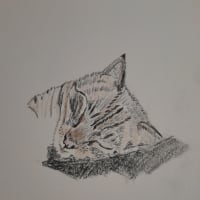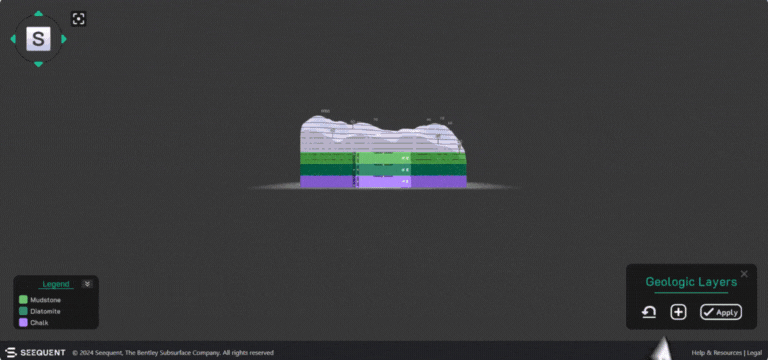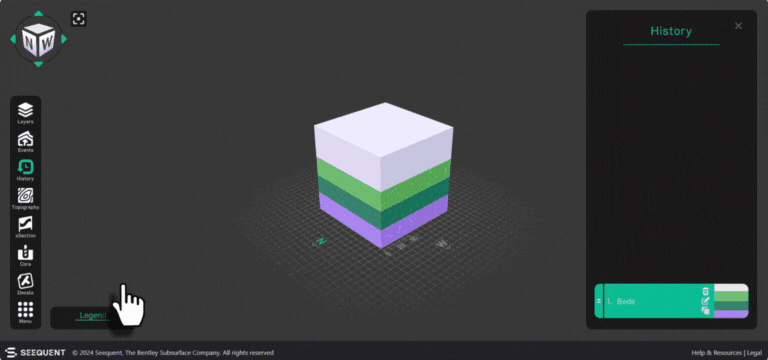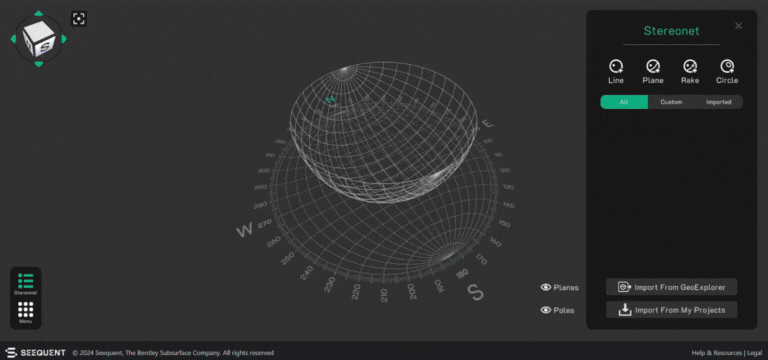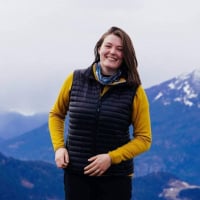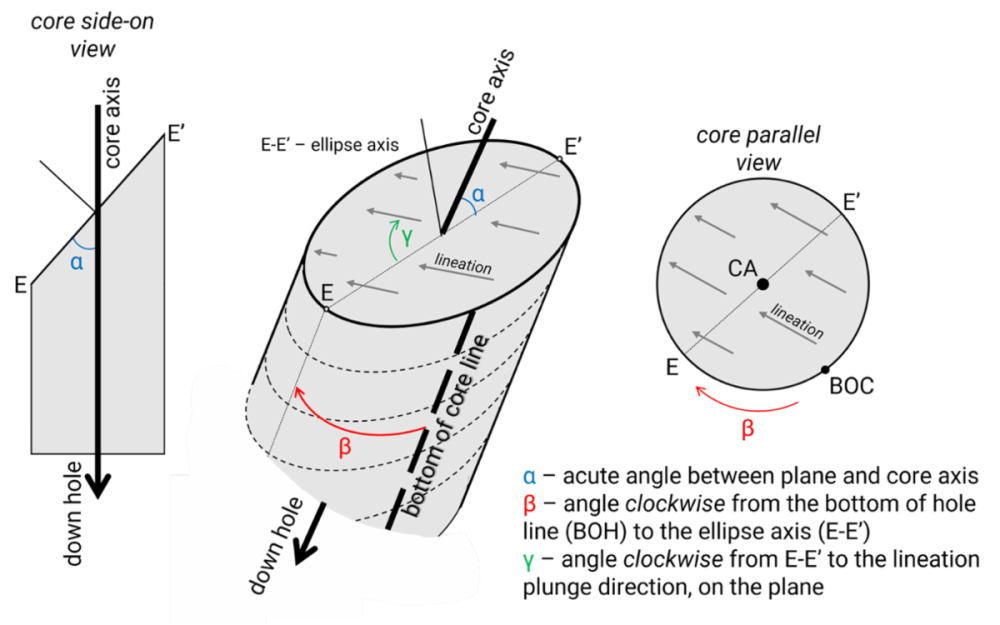Best Of
New Course Announcement: Master Your Drilling Data with Driver!
Hi Seequent Community,
I'm happy to announce a new on-demand training course now available on the Seequent Learning Centre: Driver Fundamentals.
For those new to it, Driver is a cloud-based application that uses machine learning for rapid exploratory data analysis of your drilling data. It's a powerful tool for discovering trends and patterns in your deposit's structure, helping you build more accurate models in Leapfrog with less manual effort.
About the Course
This introductory course will guide you through the essential workflows to get you up and running with Driver. You'll learn the fundamentals of:
- Connecting to and importing data
- Navigating the Driver interface
- Analyzing drilling data
- Visualizing results and integrating them with Leapfrog
The course is perfect for geologists and engineers who want to unlock deeper insights from their drilling and assay data. After completing the course, you will receive a certificate of completion.
Get Started
You can enroll in the course today through the Seequent Learning Centre:
I encourage you to check it out. I'm eager to hear your feedback, so please share your thoughts and any questions in the discussion below
💥 Exciting Updates in Visible Geology!
We’re thrilled to announce some powerful new features designed to make your geological modelling experience more intuitive, efficient, and visually clear.
👀 Plus, Google account login for Visible Geology is coming soon! Keep an eye out for more information.
Here’s what’s new:
👉🏼 Lithology legend display
Easily view the lithologies in your models with a new dynamic legend. As you model, the legend updates!
👉🏼 Edit custom topography
No more starting from scratch! You can now reshape, refine, and adjust existing custom topographies directly within Visible Geology.
👉🏼 Stereonet toggle for poles and planes
The new toggle feature lets you show or hide poles and planes in the Stereonet view, keeping your diagrams clean and focused.
👉🏼 Set colours for assignments
It's now easier to differentiate and organise multiple assignments visually with custom colours.
We’ve also resolved some pesky bugs to make your experience smoother, including:
- Plunge fold behaviour bug fixed
- Unity upgrade implemented
- Stereonet auto-naming vs parameter confusion resolved
- Zoom speed adjusted for better control
- Decals no longer cross models
Ready to explore these improvements? Visit www.visiblegeology.com, log in to Visible Geology and experience the updates today!
Leapfrog 2025.3 is live!
Hello Leapfrog Community 🎉🐸
I’m excited to share with you today the link to the latest version of Leapfrog Geo, Leapfrog Works, and Leapfrog Energy. The latest release improves efficiency and gives you greater control across data analysis and modelling workflows.
In this version, you’ll find:
🔹Refined geostatistical analysis: Save graphs and tables, and filter swath plots by domain or set coordinate limits
🔹Contextual core imagery: Stream Imago core photos directly in the drillhole correlation tab, with automatic unit conversion
🔹Revamped structural toolkit: Fine-tune clustering settings in downstream models, and enjoy a new interface layout and display filtering in stereonets
🔹Better site presentation with strip view: Add strip views to long sections with enhanced section line controls and chainage alignment
🔹 Enhanced borehole planning experience: Plan, visualize, and communicate more easily using end-of-hole labels and depth markers, as well as faster model evaluations and export filters
I’ll be keen to hear what you think of the new version! Click here to check it out.
Re: Bug? Incomplete "Estimate Structural Data" (from points).
I believe that Stephanie has reached out on this over at the support section.
Long story short, this is the currently designed behaviour for Estimating Structures from Points, I don't have the details, but this method will only select a subset of the data.
There are on the other hand different ways of dealing with a connected database. Such as adding in Query Filters to handle new data being added. How you set that up depends on your project.
But if you don't want new data to automatically get added with any new reloads you can use a Query Filter as soft blocker, possibly set on selected and validated holes using a Categorical Selection.
Level Up Your Block Model Management with the New BlockSync Training Course!
Hello Seequent Community!
I'm excited to announce the launch of our new, on-demand training course: BlockSync | Integrated Block Model Management.
For those of you who aren't yet familiar with it, BlockSync is a powerful, cloud-native application on the Seequent Evo platform that's redefining how we manage, analyze, and connect our block model data. It provides a single source of truth, enabling teams to collaborate on block model data from any source, with rapid model updates and real-time resource insights.
About the Course
This new, one-hour course is designed to get you up and running with BlockSync quickly and efficiently. You will learn the basics of:
- Accessing BlockSync
- Managing block models within the BlockSync environment
- Utilizing BlockSync for seamless integration with other tools
The course is perfect for anyone who works with block models and is looking to improve their data management and collaboration workflows. Upon completion, you'll receive a certificate to recognize your new skills.
Get Started Today!
Ready to dive in? You can access the course directly through the Seequent Learning Centre:
BlockSync | Integrated Block Model Management
I would love to hear your thoughts on the new course! Please feel free to share your feedback or ask any questions in the comments below.
Re: Distortion in point grid projected onto an inclined wireframe
Thanks a lot for the detailed workaround — it’s a smart approach and definitely helps in many situations.
However, there are a few caveats I’ve noticed when applying this method in projects that already have an existing topography:
- It’s not possible to create a new topography directly from a mesh when one is already defined in the project.
- In such cases, the alternative is to use the “Set Elevation” option to project the points onto the surface of the generated mesh.
The problem, however, is that when the points are moved only in the Z direction, a distortion in real spacing occurs — since the XY distances remain fixed while elevation changes.
For planar surfaces, this can be corrected using a trigonometric adjustment based on the dip of the plane:
by slightly modifying the XY spacing when creating the grid, you can ensure that, after projection, the final spacing along the inclined surface matches the desired regular mesh.
But for irregular meshes, where dip and azimuth vary continuously, this correction is not feasible — there’s no single trigonometric relationship that can preserve regular spacing everywhere.
That’s why I believe the most practical solution would be to have an option to generate a regularly spaced point grid directly on an irregular surface, preserving the true spacing along the mesh itself.
Re: Adjusting Colour Scale Wizard In Workbench
Hi @PrachiChitkara , unfortunately not at the moment sorry - still working on finding some tips online. Been trying to adjust the min-max color manually but not sure if it's "objectively" correct (?). If you guys can share some tips that would be great. Thank you!
Re: Gamma angle
Since Leapfrog geo 2024 (definitely in LF Geo 2025) you can import and convert lineations recorded in alpha-beta-gamma format. Right-click on a Drillholes set name, then Import from file or Import from ODBC and there is an option for 'lineations'. This takes you to the usual import dialog where you select holeid, depth, alpha, beta and gamma columns from your data table.
Re: Gamma angle
Hello @NatsagdorjBatbayar. Yes, you can probably convert your gamma to trend and plunge by using a calculation. It cannot be done automatically.
If you know the orientation of the bottom-of-core-line (probably the trend of the drillhole), and you know beta, then you should be able to calculate gamma. You could do this in Leapfrog or in Microsoft Excel. The calculation would look something like: [bocl trend + beta + gamma]. If the result is greater than 360, subtract 360.
See part 1 of the online Leapfrog Structural Modelling Tools course in Seequent Learning, for more information.
New courses available for OpenGround, Volsung, and BlockSync! 🚀
Hi everyone! I'm excited to share that we've recently published three new free, online courses to the Seequent Learning Centre:
- OpenGround Geotechnical Extension Quick Start Guide: Learn how to integrate Bentley Open Civil Project with OpenGround for better geotechnical data management.
- Volsung | Getting Started with Volsung Wellbore Modelling: A practical intro to wellbore modelling, including key theory and workflows for new users.
- BlockSync | Integrated Block Model Management: Get started with BlockSync—manage and access block models across different mining packages.
You can find these courses in the Seequent Learning Centre or by clicking the links above to enroll. Let us know what you think, and what courses you'd like to see added next!
